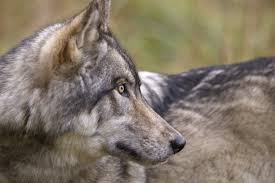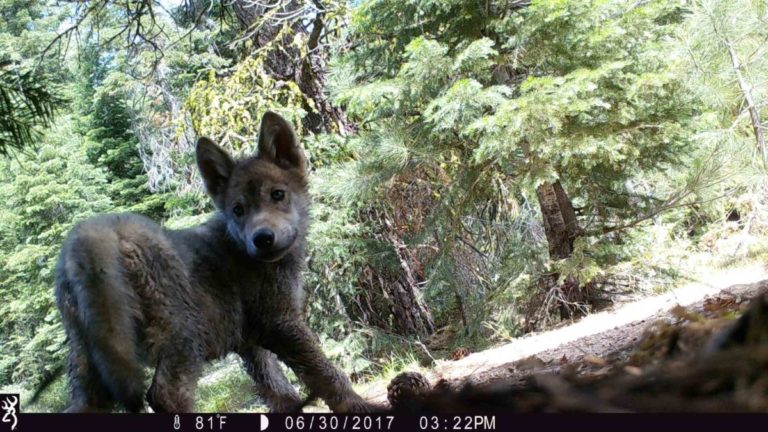
Photo by Defenders of Wildlife
Mention the word “wolf,” and it can immediately cause some people to connect to their long-held views that wolves are threats to public safety or that they are dangerous predators of livestock. In contrast, others may think of them as charismatic dog-like animals that howl at the moon and form a pack.
In reality, wolves are not a threat to people, but they are voracious, keystone predators that often can influence the overall health of an ecosystem – as they have in Yellowstone National Park. There – after wolves were reintroduced in 1995 by translocating wolves from Canada – they have played an important role in the recovery of riparian and meadow vegetation by keeping elk populations low. This has allowed for the rebound in biodiversity for wildlife species that had dwindled due to overgrazed meadows and depleted stream corridors.
In California, wolves have been missing from the state since 1924 when the last known wolf was trapped and killed. But as rebounding wolf populations have expanded from the Rockies and southward from Canada, wolves repopulated areas in Oregon and then entered California. In 2011 a radio-collared male gray wolf labeled OR-7 drifted south into California before heading back to Oregon to find a mate. He then returned to California to produce a number of litters of pups and to establish a continued presence of wolves in the State.
Over recent years wolves have traveled far and wide in Northern California. Only one known pack is presently known to exist (as of February 2021) in the state. Called the Lassen Pack, that pack may have as many as 14 wolves that roam a vast area around Lassen National Park.

Photo by Defenders of Wildlife
Early this year, OR-93, a young male wolf that was collared in Oregon in June 2020 entered California. Over 20 days he was documented to have visited Lassen, Plumas, Sierra, Nevada, Placer, El Dorado, Amador, and Calaveras counties in his 350 miles of travel. In late February, he crossed Highway 4 and headed south into Mono County on the east side of the crest.
OR-93 is the first wolf known to spend time in the Yosemite region in a century. In the same way that many Americans enthusiastically embraced the recovery of the endangered bald eagle as it slowly repopulated areas where it had been wiped out, it is likely that a large segment of the public will enthusiastically support the return of the gray wolf to California. Unfortunately, others who fiercely defend livestock interests or who simply see wolves as a public health risk may take action to resist wolf recovery.
Under the Trump Administration, the federal government delisted gray wolves across the lower 48 states and removed their protected status. In California, however, gray wolves are listed by the State as an endangered species, making it illegal to harm or harass wolves. Sadly, a large percentage of wolves that have entered California have ended up being killed. It may turn out that the recovery of the wolf population in California ends up being a slow process, with starts and stops, until the point is reached that the public as a whole accepts wolves as native to California and as a positive puzzle piece in the overall ecosystem of the State’s wild areas.

